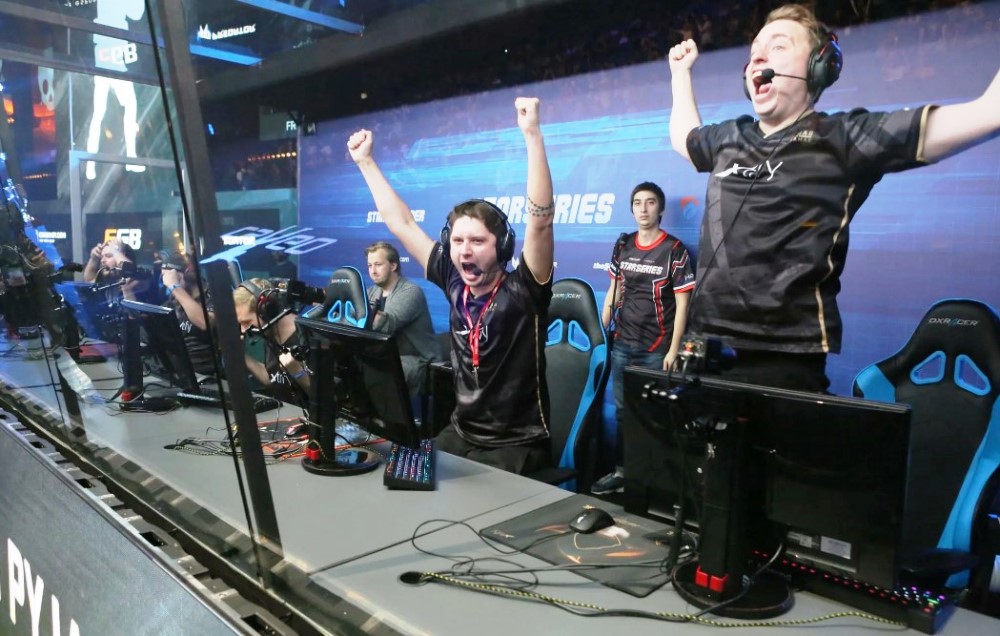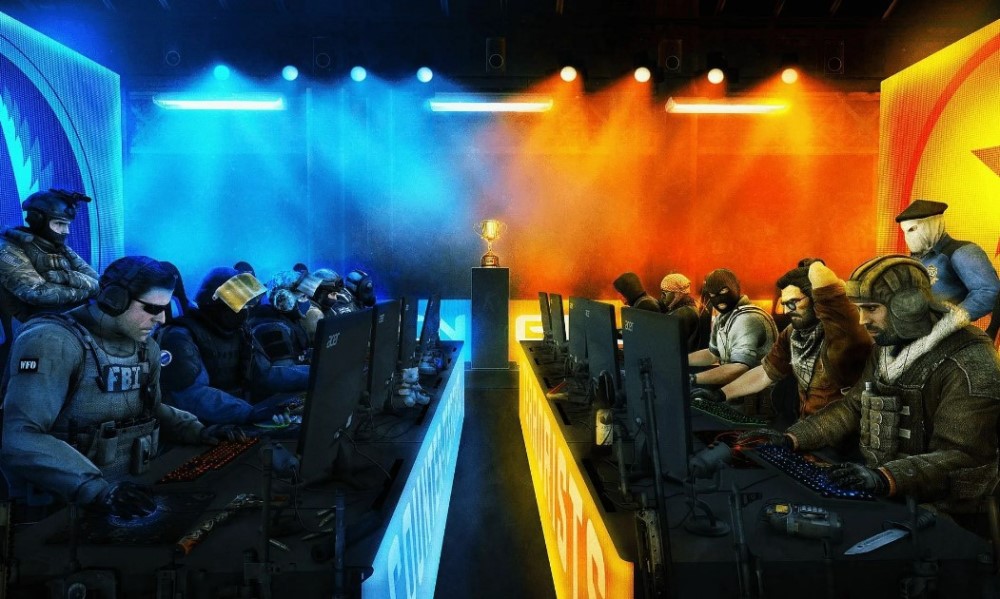
These leaderboards typically show various statistics, such as:
- Ranking: Players are listed in descending order based on their skill level or rank within the game’s competitive matchmaking system. Higher-skilled players will appear at the top of the leaderboard.
- Win-Loss Ratio: The number of matches won and lost by each player, along with the ratio between the two, helps gauge a player’s overall performance.
- Kill-Death Ratio (K/D): The number of kills and deaths a player has achieved during their matches, often presented as a ratio. A higher K/D ratio generally indicates better individual performance in the game.
- Points or Elo Rating: Some leaderboards might also display a points system or an Elo rating, which is a numerical representation of a player’s skill level. The Elo system is commonly used in competitive games to match players with similarly skilled opponents.
- Maps and Game Modes: The leaderboard may specify which maps and game modes the player’s statistics apply to, as different players may excel in various maps and game types.
The primary purpose of CS:GO leaderboards is to provide a sense of achievement and competition among players. They act as a way for players to compare their performance to others, strive for higher rankings, and gauge their progress over time. Leaderboards also serve as a motivation for players to improve their skills and climb the ranks, adding an element of prestige to those who reach higher positions.
Additionally, some competitive players and teams may use leaderboards to scout potential teammates or opponents. It allows them to identify skilled players who could potentially be a good fit for their team or to assess the strength of their adversaries.
It’s important to note that features and functionalities in games can change over time, so there might be updates or variations to the CS:GO leaderboards beyond my last update. For the most current information, it’s best to check in-game or official CS:GO sources.

Ranking
In CS:GO (Counter-Strike: Global Offensive), ranking refers to a system that determines a player’s skill level and places them in a specific rank or skill group. The ranking system is used primarily in the game’s competitive matchmaking mode, where players play against others of similar skill levels.
The CS:GO ranking system is based on a hidden “Elo” rating system, which was originally developed for chess. It works by assigning a numerical value to each player, reflecting their skill level. When players participate in competitive matches, their performance and the outcomes of those matches affect their Elo rating.
Here’s a general overview of how the CS:GO ranking system works:
- Placement Matches: When a new player starts playing CS:GO competitive matchmaking, they need to play a series of placement matches. These matches are used to assess their initial skill level. The results of these matches will determine their starting rank.
- Skill Groups: The ranks in CS:GO are represented by skill groups. Each skill group has a distinctive name and icon. There are multiple ranks, ranging from low to high skill levels. Some examples of skill group names include Silver, Gold Nova, Master Guardian, Legendary Eagle, Supreme, and Global Elite.
- Elo Points: As players win or lose matches, their Elo rating will be adjusted based on the relative skill levels of their opponents and teammates. Winning against higher-ranked players will grant more Elo points, while losing to lower-ranked players will result in losing more points.
- Ranking Up and Down: As a player’s Elo rating increases or decreases, they may move up or down in the skill groups. Players who consistently perform well and win matches will rank up and move towards higher skill groups. Conversely, players who struggle and lose matches may rank down.
- Inactive Players: To prevent rank inflation and maintain accurate skill representation, players who have been inactive for an extended period might have their ranks removed. When they return and play again, their performance will determine their new rank.
- Prime Matchmaking: CS:GO also has a feature called Prime Matchmaking, where players who have linked their phone number to their Steam account can play in a separate pool of players. Prime status aims to reduce the number of hackers and smurfs (high-skilled players using alternate accounts) in matches.
It’s worth noting that the specific details and mechanics of the CS:GO ranking system might be subject to updates and adjustments by the game’s developers, so it’s essential to check the latest information from official sources to understand the current state of the ranking system.
Win-Loss Ratio
The Win-Loss Ratio (W/L Ratio) is a simple but essential statistic used to measure a player’s performance in games like CS:GO (Counter-Strike: Global Offensive) and many other competitive multiplayer games. As the name suggests, it represents the ratio between the number of games a player has won and the number of games they have lost.
The formula for calculating the Win-Loss Ratio is:
W/L Ratio = Number of Wins / Number of Losses
For example, if a player has won 50 matches and lost 25 matches, their Win-Loss Ratio would be:
W/L Ratio = 50 / 25 = 2
A Win-Loss Ratio greater than 1 indicates that the player has won more matches than they have lost, suggesting a positive performance. On the other hand, a ratio less than 1 indicates that the player has lost more matches than they have won, implying a negative performance. A Win-Loss Ratio of exactly 1 means that the player has an equal number of wins and losses.
Win-Loss Ratio is often used to quickly gauge a player’s overall success in a game and their ability to contribute to their team’s victories. However, it’s worth noting that this ratio alone may not provide a comprehensive picture of a player’s skill or performance, as it does not take into account other important factors like individual performance in matches, the strength of opponents faced, or the contribution to the team’s objectives.
In competitive games with matchmaking systems, players are often matched with opponents of similar skill levels, leading to a roughly balanced Win-Loss Ratio for most players over time. As players improve their skills, their Win-Loss Ratio may naturally increase.
Players and teams may use Win-Loss Ratios as one of several metrics to assess performance and progress over time, but it’s essential to consider additional statistics and context to get a more complete understanding of a player’s or team’s capabilities.
Kill-Death Ratio (K/D)
The Kill-Death Ratio (K/D Ratio) is another crucial statistic commonly used in first-person shooter (FPS) games, including CS:GO (Counter-Strike: Global Offensive). It measures a player’s performance in combat by comparing the number of kills they have achieved to the number of times they have been killed.
The formula for calculating the Kill-Death Ratio is:
K/D Ratio = Number of Kills / Number of Deaths
For example, if a player has achieved 100 kills and has been killed 50 times, their K/D Ratio would be:
K/D Ratio = 100 / 50 = 2
A K/D Ratio greater than 1 indicates that the player has secured more kills than deaths, suggesting a positive performance in combat. A K/D Ratio of exactly 1 means the player has an equal number of kills and deaths. A K/D Ratio less than 1 indicates that the player has been killed more times than they have managed to secure kills.
The Kill-Death Ratio is often used as a quick indicator of a player’s individual skill and efficiency in eliminating opponents without being eliminated themselves. However, like any single statistic, it may not tell the whole story of a player’s overall contribution to the team or their tactical abilities, as it focuses solely on their performance in gunfights.
A high K/D Ratio suggests that a player is skilled at getting kills and staying alive, but it’s important to remember that different roles within the team may influence this statistic. For example, an entry fragger in CS:GO is a player who leads the charge into enemy territory, often sacrificing themselves to gather information and make openings for their team. This role typically results in a lower K/D Ratio but can be crucial for the team’s overall success.
Ultimately, the Kill-Death Ratio, while valuable, should be considered alongside other statistics and aspects of gameplay to get a comprehensive assessment of a player’s overall performance and impact on the game. It’s also essential to remember that the primary objective in team-based games is to work together as a team to achieve the game’s objectives, rather than solely focusing on individual statistics.
Points or Elo Rating
Points or Elo Rating are additional metrics used in various competitive games, including CS:GO (Counter-Strike: Global Offensive), to measure a player’s skill level and progression.
Let’s explore both of these metrics:
- Points: Points are a general term that refers to a numerical representation of a player’s performance or progress in a game. Different games may have different point systems to track various aspects of a player’s gameplay. In CS:GO, points can be used to signify a player’s score in a particular match or accumulated points from various game modes. Points can be earned through actions like kills, objectives completed, and other in-game achievements.
- Elo Rating: Elo rating is a specific and widely used system for calculating the relative skill levels of players in competitive games. The Elo system was developed by Arpad Elo and originally designed for chess, but it has been adapted for various other games, including CS:GO.
In CS:GO, the Elo rating system is used for matchmaking, where players are assigned an initial Elo value based on their performance in placement matches. As players participate in competitive matches, their Elo rating is adjusted based on the outcomes of those matches and the relative skill levels of their opponents. Winning against higher-rated opponents will result in more significant Elo gains, while losing to lower-rated opponents will lead to more substantial Elo losses.
The Elo system aims to match players against others with similar skill levels, creating balanced and competitive matches. Over time, as players win or lose matches and their Elo rating fluctuates, they should end up playing against opponents of comparable skill, providing challenging and rewarding gameplay.
Elo ratings are often used in conjunction with a visible ranking system, where players are assigned specific skill groups or ranks based on their Elo rating. The higher the Elo rating, the higher the rank a player may achieve. As players improve their skills and win matches, their Elo rating increases, leading to a higher rank.
In summary, points and Elo rating serve different purposes in competitive games like CS:GO. Points may be used for in-game scoring and achievements, while Elo rating is a more formalized system to assess a player’s skill level and determine matchmaking and rank placement in competitive play.
Maps and Game Modes
In CS:GO (Counter-Strike: Global Offensive), maps and game modes play a significant role in shaping the gameplay experience and adding variety to the matches.
Here’s an overview of what maps and game modes are:
- Maps: Maps are the virtual environments where the gameplay takes place. In CS:GO, maps are designed with different layouts, terrains, and settings to offer unique gameplay experiences. Each map has its own set of challenges, chokepoints, and strategic possibilities, making it essential for players to adapt their tactics accordingly.
CS:GO features a wide variety of maps, some of the most popular ones being:
- Dust II
- Mirage
- Inferno
- Overpass
- Nuke
- Train
- Cache
These maps are used in both casual and competitive play and are rotated in official matchmaking.
The selection of maps can greatly influence the strategies employed by players and teams, making map knowledge a crucial aspect of CS:GO gameplay.
- Game Modes: CS:GO offers several game modes, each with its own unique rules and objectives. The main game modes include:
- Casual: In Casual mode, players have a more relaxed and less competitive experience. Rounds are shorter, and players have more money to buy weapons and equipment. There is also team damage reduction, meaning players inflict less damage to their teammates.
- Competitive: Competitive mode is the core mode in CS:GO, where players engage in more serious and skill-based gameplay. In this mode, players are matched with others of similar skill levels based on the Elo rating system. The objective is to win rounds by completing the map-specific objectives (planting/defusing bombs or rescuing hostages).
- Wingman: Wingman is a smaller-scale competitive mode where teams consist of only two players each. The maps are also smaller, allowing for more intense and faster-paced gameplay.
- Deathmatch: In Deathmatch mode, players respawn immediately after being eliminated, allowing for continuous action. The objective is to score as many kills as possible within a set time limit.
- Arms Race: In Arms Race, players progress through a predefined weapon list by securing kills with each weapon. The first player to get a kill with the final weapon (the golden knife) wins the game.
- Demolition: Demolition mode is a casual mode with a twist. Players must complete objectives like planting or defusing bombs, but their weapons change each round based on their performance in the previous round.
Each game mode provides a different gameplay experience, catering to various playstyles and preferences of players.
CS:GO is known for its diverse map pool and engaging game modes, which contribute to its popularity as one of the most-played first-person shooter games in the world.


